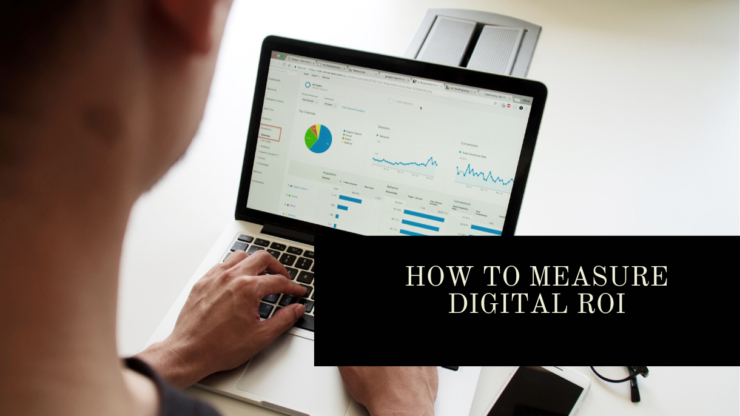Successfully demonstrating return on investment (ROI) for digital campaigns can mean the difference between additional dollars allocated to a budget and potential axing of the project all together. How you measure that success follows the same general steps for all communications measurement, the tools just vary.
The 4 Steps to Measure Digital ROI
These four steps are the foundation of all communication measurement.
STEP 1: SET OBJECTIVES
Amazingly, this step is skipped all the time. Most people jump right into posting on social or creating a digital campaign with absolutely no end goal in mind. There is no way to measure ROI or determine success without objectives. And not just any objectives, SMART objectives:
Specific
Measurable
Attainable
Relevant (or Realistic)
Time-bound
When asked if an objective has been met, you should be able to definitively answer “yes” or “no,” and the only way to do that is if the objectives are SMART.
STEP 2: IDENTIFY AVAILABLE DATA
There are a number of analytics tools available (many for free) to measure social and digital activity. An easy place to start is Google Analytics, and the provided analytics on Facebook, Twitter, LinkedIn, Instagram, YouTube, Constant Contact and MailChimp, which are all free and relatively comprehensive.
If you can put some money behind data gathering, software such as Sprout Social, Brandwatch, and Hootsuite are still relatively inexpensive and can produce slightly more in depth data.
Based on what you want to achieve, determine what data is important for you to collect.
STEP 3: DETERMINE A BENCHMARK
Inherently, measurement is a comparative tool because to determine whether a campaign was successful or not, the results need to be compared to something. The most effective comparisons are to your competition and peers over time. However, that’s not always easily obtainable data. Another, less effective, benchmark is to compare your organization to its past performance over time. This type of benchmarking demonstrates whether performance is improving or declining.
- If a comparison of your organization to others in the industry in general is a useful benchmark, there are several organizations that do this, such as RivalIQ. You can also Google “social media industry index” for your industry and see what comes up.
- If your company is willing to pay, Unmetric is a platform that automatically includes your competition in its social media tracking and puts your results into perspective relative to the industry.
STEP 4: DRAW CONCLUSIONS AND ADJUST
In this step you’re specifically determining what campaign, or parts of a campaign, were most effective and which efforts just aren’t paying off. The data that you’ve gathered will help you to make these determinations.
Having the data is one thing, presenting it in a way that is meaningful and attractive is something else. We find the best way to present findings to leadership or clients is to create a visual measurement dashboard. You can create one yourself relatively easily in PowerPoint (easier for smaller campaigns without a ton of data), or many paid services, like Sprout Social, can create attractive dashboards for you. The amount of data and level of detail required for presentation purposes should typically be one to two pages that quickly inform.
Your dashboard should easily answer:
- What happened?
- So what? (demonstrate how it met or did not meet the campaign objectives)
- Now what? (recommendations on improving the process for better outcomes)
One quick note here: Realize that these steps are industry best practices, BUT at the end of the day, if you’re not measuring what leadership or the client cares about, it doesn’t matter how great the results. That’s why it’s imperative for everyone (leadership and client included) to agree on the objectives at the outset.
Below are two examples of how you might go about measuring the ROI for a digital communications campaign:
Example 1
OBJECTIVE (what do we want to do?)
- Sell more tickets (good start)
- Sell more tickets to women ages 35-44 (better)
- Sell 20% more tickets to women ages 35-44 by December 2020 (best)
IDENTIFY DATA SOURCES (how will we do it?)
- Traffic to the tickets sales page of the website
- Clicks on the “buy tickets” button embedded in an email campaign to target audience
- Social media engagement by target audience group around posts with a buy ticket call to action
- Targeted social ad clicks to “buy tickets” page
DETERMINE A BENCHMARK (what are we measuring against?)
- Historical web traffic to ticket sales page
- Past email marketing engagement
- Past social media post engagement
- Past social ad engagement
- Industry standards
DRAW CONCLUSIONS AND ADJUST
Example 2
OBJECTIVE (what do we want to do?)
- Increase new business (good start)
- Increase new business from institutional clients (better)
- Increase new business from institutional clients by 15% by EOY 2020 (best)
IDENTIFY DATA SOURCES (how will we do it?)
- Traffic to institutional case studies on the web page
- LinkedIn connections between decision makers at target institutions and leadership/sales personnel
- Views by decision makers at target institutions of specific LinkedIn Publisher articles pertaining to institutional capabilities
- Social media engagement by decision makers at target institutions on posts pertaining to institutional capabilities
- Clicks on links to institutional case studies embedded in an email campaign to decision makers at target institutions
DETERMINE A BENCHMARK (what are we measuring against?)
- Historical web traffic to case studies and capabilities pages
- Past email marketing engagement
- Past social media post engagement
- Industry standards
DRAW CONCLUSIONS AND ADJUST
Posted In Digital Strategy & Social Media, Measurement
 Jessica Sharp
Jessica Sharp 